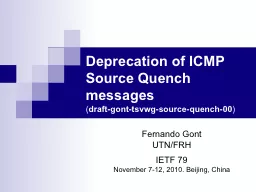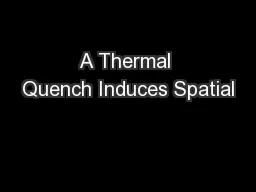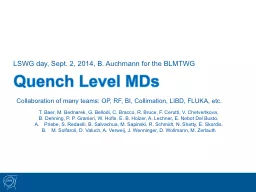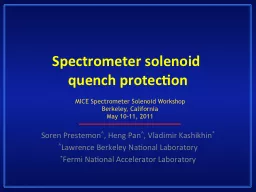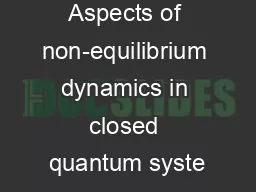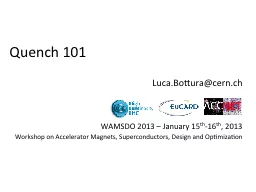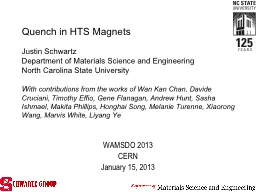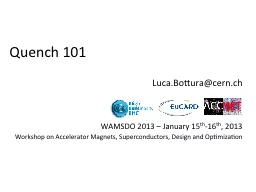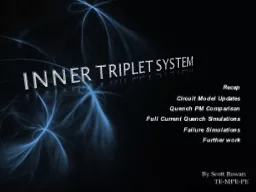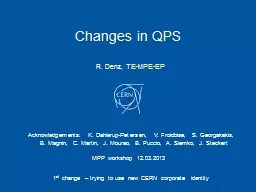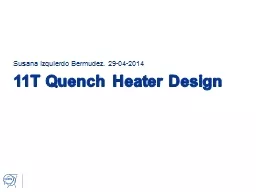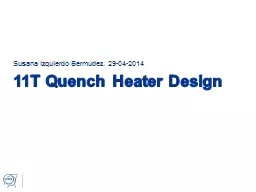PPT-Vertical Testing Quench Recovery
Author : phoebe-click | Published Date : 2018-10-24
A Marone 121917 1 Outline Testing Scope Schedule Number of quenches Stored energies Burst disc rupture Contributing factors Quench Summaries Estimates Short Term
Presentation Embed Code
Download Presentation
Download Presentation The PPT/PDF document "Vertical Testing Quench Recovery" is the property of its rightful owner. Permission is granted to download and print the materials on this website for personal, non-commercial use only, and to display it on your personal computer provided you do not modify the materials and that you retain all copyright notices contained in the materials. By downloading content from our website, you accept the terms of this agreement.
Vertical Testing Quench Recovery: Transcript
Download Rules Of Document
"Vertical Testing Quench Recovery"The content belongs to its owner. You may download and print it for personal use, without modification, and keep all copyright notices. By downloading, you agree to these terms.
Related Documents


